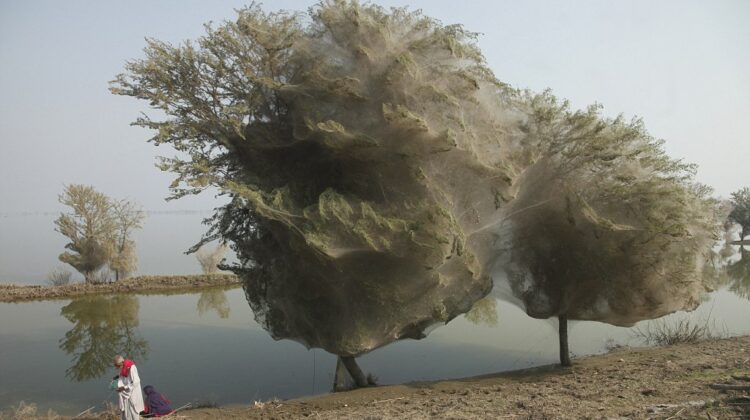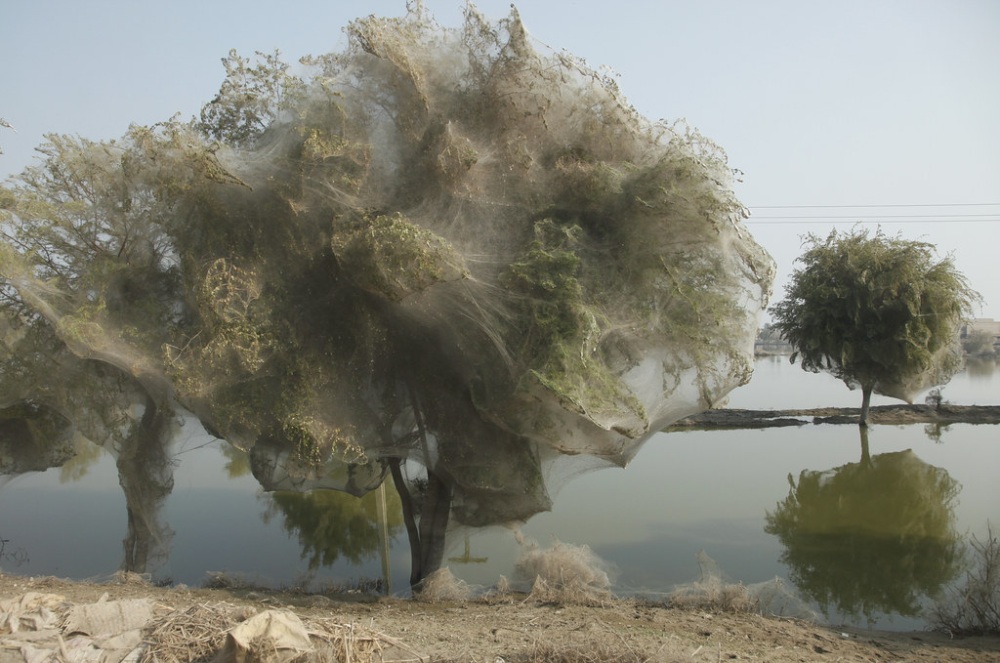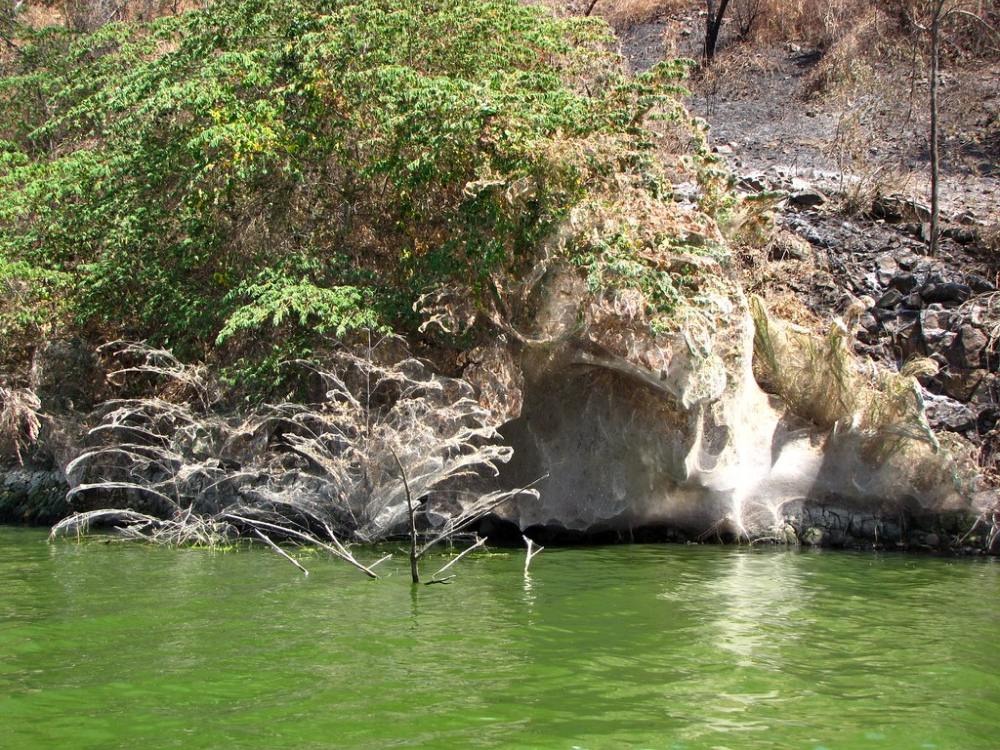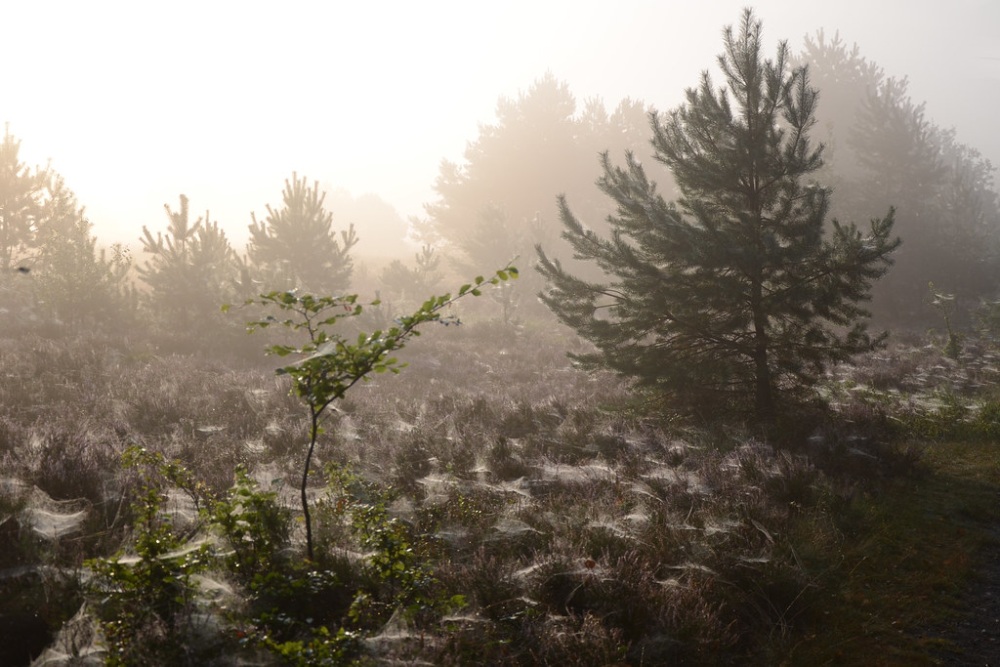
Spider webs and their eight-legged architects might send shivers down the spines of many. The mere thought of them can be unnerving, especially for those with arachnophobia. Yet, within the realm of spider webs, there exists a rare and mesmerizing spectacle known as “ballooning,” a phenomenon that challenges perceptions and invites us to reconsider the intricate world of these silk-spinning creatures.
Spiders, masters of silk craftsmanship, primarily construct their webs as snares to ensnare prey and safeguard their precious eggs. Beyond their role in capturing sustenance, these silk structures can also double as modes of transportation. Spiders ascend to higher vantage points, deploying delicate strands of silk that hitch a ride on the wind’s currents, carrying the arachnids away to new destinations.

But what occurs when these arachnids face circumstances that compel them to abandon the safety of familiar terrain? In such instances, their survival strategy involves seeking refuge at greater altitudes—a behavior aptly termed ballooning. This phenomenon, both exceptionally rare and profoundly captivating, unfolds as a response to natural events such as flooding.
An extraordinary snapshot, captured amid a monsoon in Pakistan, provides a visual testament to the resilience of these spiders. As floodwaters surged, driving them to higher ground, the arachnids wove intricate webs that enshrouded trees in gossamer veils.

A parallel episode transpired in Australia, where heavy rainfall and forceful winds wreaked havoc upon parts of Victoria, inducing floods and widespread havoc. In a bid to escape the rising deluge, spiders embarked on a quest for refuge, adorning roads, trees, and fields with ethereal webbing. Astonishingly, in one locale, the resulting web stretched over a kilometer of roadway.
Evidently, the versatility of spider silk knows no bounds. It is this very trait that enables spiders to transform entire fields and meadows into canvases of intricate threads. Instinctively ascending blades of grass, these arachnids meticulously release hundreds of meters of silk, weaving a remarkable tapestry across the landscape.
While this remarkable behavior might challenge the ecological balance of fields, it also offers a noteworthy benefit to local inhabitants. The heightened humidity and increased water levels often create conducive breeding grounds for mosquitoes. Paradoxically, the elevated webs fashioned by these skilled weavers serve as an effective deterrent against these pesky bloodsuckers, providing a natural means of pest control.

The juxtaposition of vast fields cloaked in silk and the surreal image of spider-borne balloons poised against the horizon serves as a poignant reminder of nature’s capacity to astonish and, yes, occasionally invoke a shiver of trepidation. For those fortunate—or perhaps intrepid—enough to encounter these silk-woven marvels, the experience prompts a profound question: How would you react upon stumbling upon these enigmatic silk-spinning artisans?”

Leave a Reply